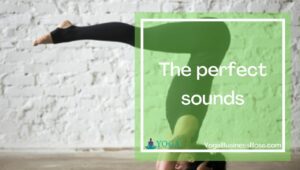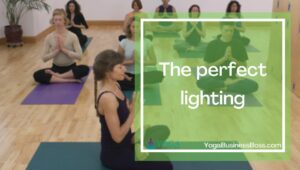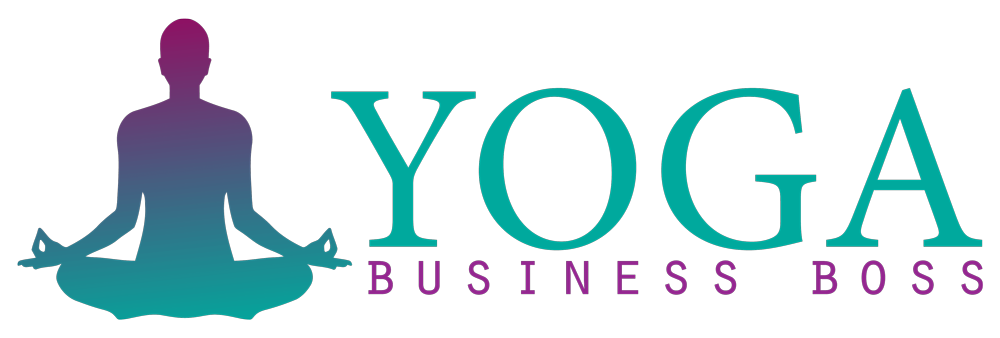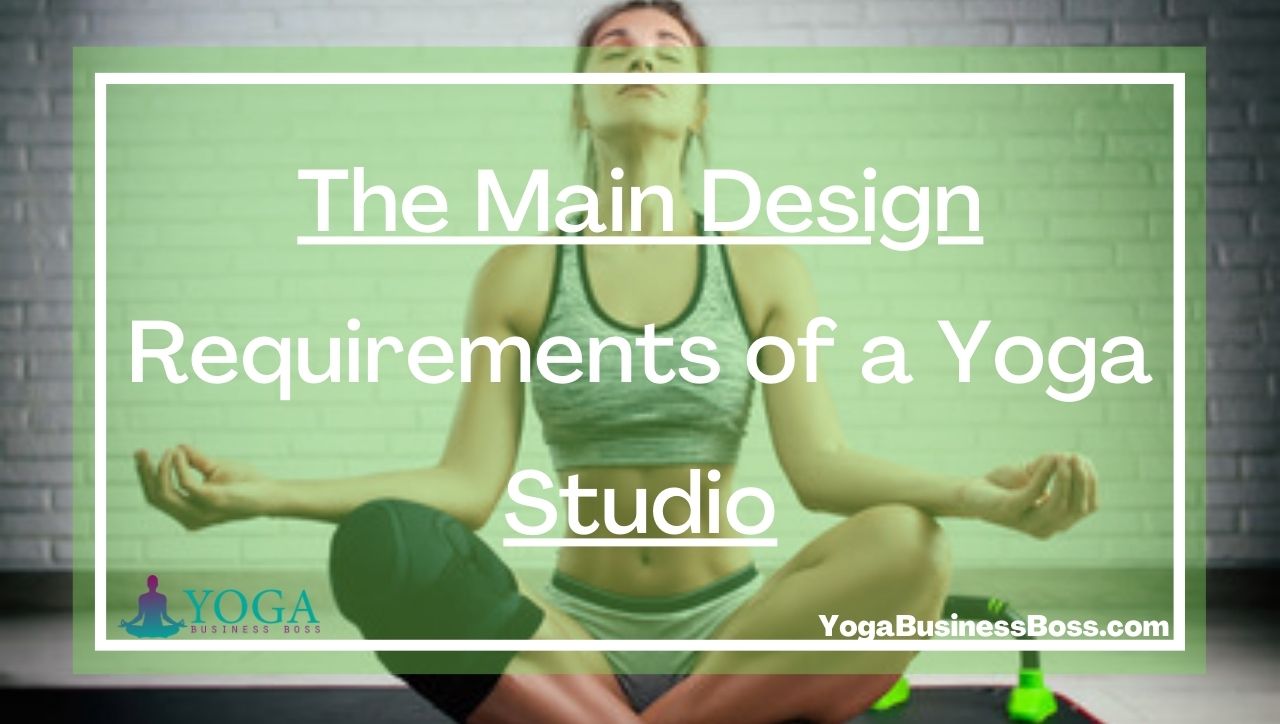Ready to set up the perfect yoga studio? While there are many factors to consider, one of the most important is the design. Creating a space that reflects your vision and helps your clients feel relaxed and supported is key.
The main design requirements to consider when setting up your yoga studio are its acoustics, the right flooring material, the perfect lighting, and the appropriate furniture.
Here, we will discuss the essential design requirements for setting up your ideal yoga studio. From layout and lighting to décor and amenities, we’ll cover the things you need to know to create an inviting and welcoming space for your clients.
The perfect sounds

Yoga studio design calls for the appropriate application of sound and music in the space for practice. Music and sound (especially noise) can affect one’s ability to concentrate and meditate, as well as impact the levels of a person’s anxiety and blood pressure. Also, as these can change the electrical activity in the brains of yogis and affect their mental states during classes, it is important to consider soundproofing or acoustical treatments for the studio.
The acoustics of a yoga studio requires that interior sounds be clear and can effectively reach everyone inside with less echo and reverb. Gentle and clean sounds can create a listening experience that promotes awareness and healing while doing yoga poses and meditating.
For small yoga studios, soundproofing the walls can be quick by using sound soak panels which can be put up easily. You can also install cork or carpet boards or foam panels. You can also soundproof your ceilings by putting acoustical sails in place, using acoustical banners, and suspended ceiling panels.
Lastly, you can effectively absorb sound in your studio by using free-standing objects such as a room divider, a white noise machine, and small stereo speakers. If you choose to use sound systems over drums, gongs, and bamboo flutes to enhance your yoga classes, go check out some options here.
The Average Earnings of Yoga Instructors
The right flooring
When it comes to setting up your ideal yoga studio, the right flooring is essential. Not only does it impact the aesthetic of the space, but it’s also important to make sure that the type of flooring you choose is comfortable and slip-resistant for both the instructor and students.
Carpets are a popular option for yoga studios due to their cushioning effect but they can be difficult to clean and keep sanitary. Hardwood flooring and laminate can provide a durable and pleasing look, but there are some risks involved with this type since they’re not as cushioned as carpet or may be slippery. Additionally, laminate flooring is discouraged for studios that hold hot yoga sessions.
Rubber flooring is the ideal option for yoga studios. It’s comfortable, slip-resistant, and easy to clean, making it the perfect option for a safe and hygienic practice space. Additionally, rubber flooring comes in a variety of colors and patterns, so you can customize it to match the vibe of your studio.
The Cost To Heat A Yoga Studio
The perfect lighting

In any space, lighting plays a huge role in creating the right atmosphere. For a yoga studio, you would want to create a serene and calming space with enough light to help you stay focused and comfortable during your practice.
Natural light is ideal, as it helps create a calming atmosphere and is healthier for the eyes. If you have windows in your studio, make sure you have adjustable curtains or blinds to keep out any bright, glaring light that could disrupt your practice. If you don’t have much access to natural light, you’ll need to use artificial lighting. Choose warm-toned LED bulbs or incandescent lights to help create a relaxing atmosphere in your studio. You may also want to consider adding dimmers so you can easily adjust the intensity of the lights. When setting up the lighting, keep it low-key and avoid too many harsh shadows.
When choosing lighting fixtures, make sure they are easy to clean and maintain. Keep your overhead lights dust free and add supplemental task lights or lamps to give additional illumination in different areas of the studio. Lastly, be sure to consider safety and install lights with anti-glare features and/or energy-efficient bulbs.
By taking the time to carefully plan your lighting, you can create a beautiful e yoga studio where you can relax and practice without disruption.
A Business License is Not Needed To Teach Yoga
The appropriate furniture and equipment
When designing a yoga studio, the right kind of furniture pieces and yoga props matter. They should be able to be functional, provide comfort, and enhance the appearance of the space.
Folding chairs are a good option when considering seating arrangements. They provide students with a comfortable place to relax during breaks and may be kept when classes start, making it easier to move around the room when needed. Foldable tables or those with wheels can serve as centerpieces or movable storage units at the same time.
Yoga blocks and mats are also essential pieces that can help design a studio. They can double as props for doing various poses and as interesting accents in the studio. Their colors, textures, and shapes can enhance not just the yoga experience but the design of the space as well. Finally, you may consider adding a storage unit or rack for your yoga props and equipment. This will help keep everything organized and for yoga props to be easily accessible for your students.
Conclusion

The main design requirements to set up your ideal yoga studio are its acoustics, the right flooring material, the perfect lighting, and the appropriate furniture and props. Every yoga studio is unique, but they all share one goal: to provide a safe space for calm, reflection, and healing. A flexible space layout, a soothing atmosphere, warm material choices, and all the essential elements that bring together the perfect yoga studio interior are thought to match the experience of relaxation and well-being better.
Related Questions
A yoga studio should have functional storage for mats, towels, straps, accessories, and inspirational elements such as mood lighting, tapestries, posters, incense, mirrors, and crystals.
There is a consistent yoga class structure: centering, warmup, core sequence, and relaxation. By following this structure, you can make the process of planning yoga classes less time-consuming.
To learn more about starting your own Yoga Business check out my startup documents here.
Please note: This blog post is for educational purposes only and does not constitute legal advice. Please consult a legal expert to address your specific needs.

Meet Shawn Chun: Entrepreneur and Yoga Fan
I’m a happy individual who happens to be an entrepreneur. I have owned several types of businesses in my life from a coffee shop to an import and export business to an online review business plus a few more and now I create online yoga business resources for those interested in starting new ventures. It’s demanding work but I love it. I do it for those passionate about their business and their goals. That’s why when I meet a yoga business owner in public at a studio or anywhere else I see myself. I know how hard the struggle is to retain clients, find good employees and keep the business growing all while trying to stay competitive.
That’s why I created Yoga Business Boss: I want to help future yoga business owners like you build a thriving business that brings you endless joy and supports your ideal lifestyle.

